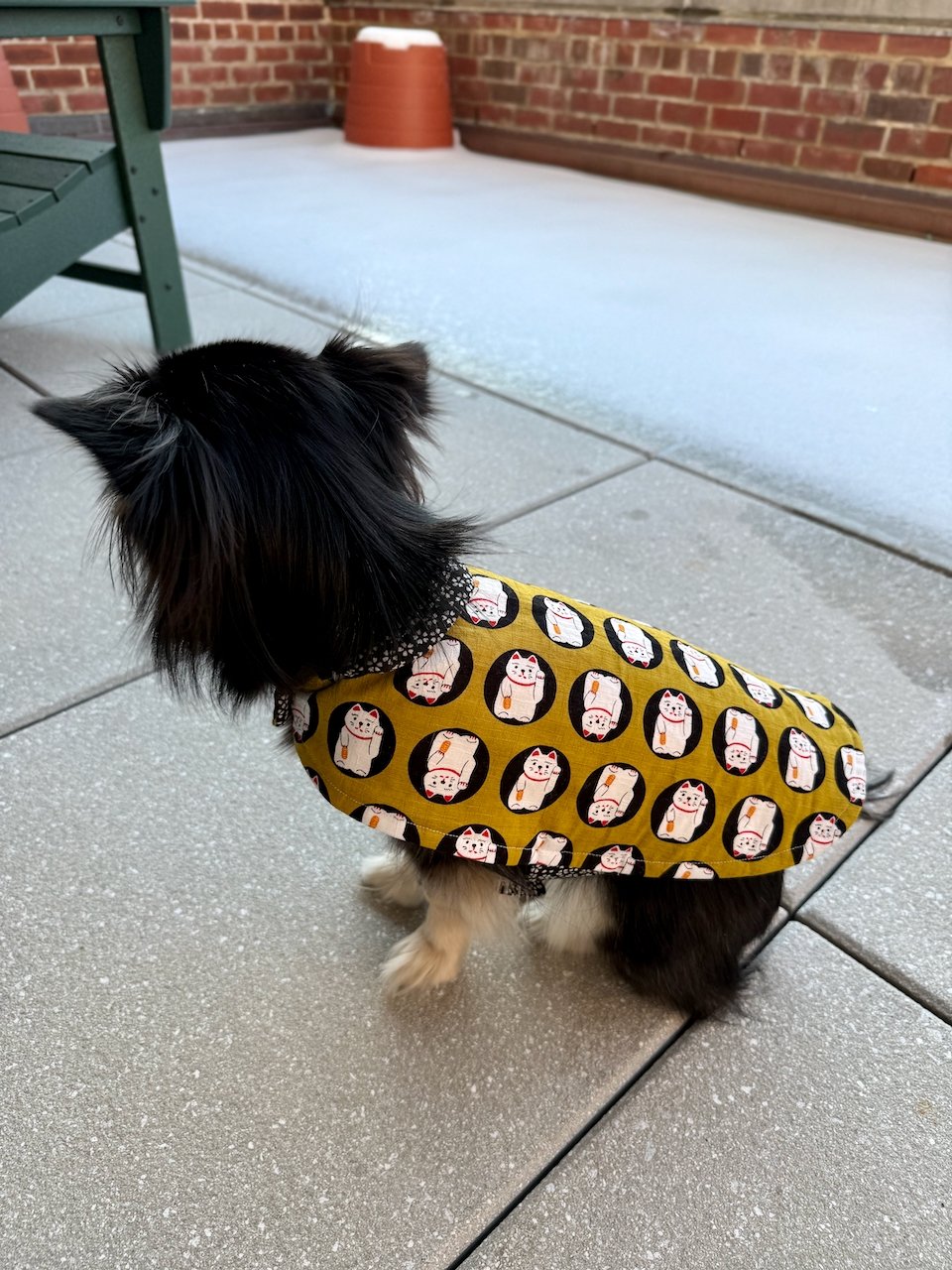The first time, I used a Joz Makes Quilts tutorial to make four blocks made up of 16 small squares each, which I then sewed together and used as the top piece of the jacket. (I used an extra quilted square to make the collar.) I did this mostly because I wanted to practice cutting and piecing a quilt, and because it made the coat project feel more interesting and fun.
The second time I made the jacket, I basically did a speed run and completed it in just a couple hours on a Saturday afternoon. I decided not to quilt it this time because a) I thought the stiched lines would take away from the cute print, b) I didn’t trust myself to sew the seams straight and I knew they’d be really visible since I didn’t have a matching thread color, and c) I didn’t think there was enough batting for this to be totally necessary, especially since it was already top-stitched. (Also, I can always go back and quilt it later if I change my mind.)
Overall, I really like this pattern, and I’m pretty sure I’ll be making it several more times in the coming months.
At the moment, I’m currently waiting on the fabric I need to get to work on a Shoofly quilt from Penelope Handmade (weirdly, it looks like the specific pattern is no longer online).
Final thoughts
As I worked on my first couple of sewing projects, my thoughts regularly returned to my friend Alanna’s book, Knit a Hat. In the intro, she makes the case for starting with a hat over a scarf, even though a scarf is a common beginner project because it’s so simple. You only need to learn a couple of techniques to make a scarf, but, she argues, that repetition can get really boring—which makes it very easy to give up on after you inevitably make a mistake or two. A hat, though, requires you to learn several new skills at once, which keeps you engaged and also sets you up for something a lot more fun for your second project. So as I’ve been going about this, I’ve been trying to avoid metaphorical scarves in favor of hats—because if something isn’t fun to make, you’re just…not going to have fun making it!
There’s also a section in Alanna’s book titled “It Will Be Wonky”—and this is the other thing that has been top of mind for me as I practice. If you’re not good at the beginning, she writes, it doesn’t mean you’re not crafty or you’ll never get it: “In fact, it can be good to surrender to the process, to not feel like you have to be totally in control at any given moment. And if your first couple of rows, or even your first couple of projects, turn out a little wonky, it’s not the end of the world.”
I’ve really tried to embrace this approach as I’ve worked on my first projects, and I think it’s making a difference. Success, to me, right now, is simply finishing. I’m fighting the urge to give up just because something isn’t going perfectly, and—surprise!—I haven’t died as a result. Sure, some of my seams are crooked or wobbly or don’t line up perfectly…it’s fine. It’s a coat for a dog. (Also, for what it’s worth, a lot of little mistakes are way less noticeable than you might think when all is said and done and you’re observing your project from three feet away instead of six inches.) No one likes being bad at things, of course, but also…I keep reminding myself to get a grip. It’s a pair of corn pants! It’s a coat for a dog!

























